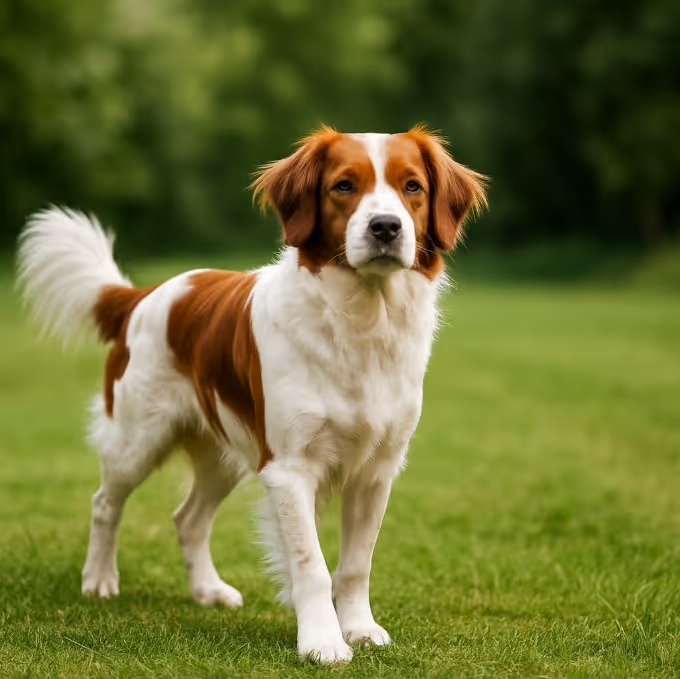The Drentsche Patrijshond (pronounced "Drent-suh puh-triesh-hond") is a versatile, medium-sized gundog from the Netherlands. Known for its loyal, affectionate nature and calm demeanor indoors, this breed is an excellent choice for active families who want a hunting companion that also excels as a gentle house dog. Their adaptability and eagerness to please make them well-suited for life in Canadian homes that can offer both outdoor activity and indoor bonding time.

The Drentsche Patrijshond, often called the "Drent," originated in the province of Drenthe in the Netherlands during the 16th century. It was developed as a multi-purpose hunting dog used for pointing, retrieving, and tracking small game and birds. Bred from old spaniel types brought to the Netherlands from France and Spain, the breed remained isolated in the Drenthe region, helping preserve its traditional characteristics. Officially recognized by the Dutch Kennel Club in 1943 and the FCI in 1943, the breed is still rare outside Europe.
Elegant yet athletic, the Drent combines grace with strength.
Low to moderate grooming needs with attention to feathering.
Energetic and intelligent, the Drent requires regular mental and physical activity.
Eager to please and sensitive, Drents thrive with gentle, consistent guidance.
Maintain a lean physique to support joint health and stamina.
Generally healthy with limited breed-specific concerns.
Rare in Canada but available through select breeders and occasional import.
Are Drentsche Patrijshonds good apartment dogs?
They can adapt to apartments with sufficient daily exercise, but thrive in homes with outdoor access.
Do Drents shed a lot?
Moderately—they shed year-round with heavier seasonal coat changes.
Are Drentsche Patrijshonds hypoallergenic?
No. They are not hypoallergenic.
Do they bark a lot?
Not excessively, but they are alert and will bark at unfamiliar activity.
Are they good with kids and other pets?
Yes—with early socialization, they’re affectionate with children and generally good with other pets.
Do Drents like to swim?
Many do! They have a natural affinity for water and retrieving.
How are Drents different from Brittanys or German Longhaired Pointers?
Drents are calmer indoors, less intense than Brittanys, and have a softer temperament than German Longhaired Pointers.
What’s their hunting style like?
They work close to the hunter, using their nose to track, point, and retrieve game gently.